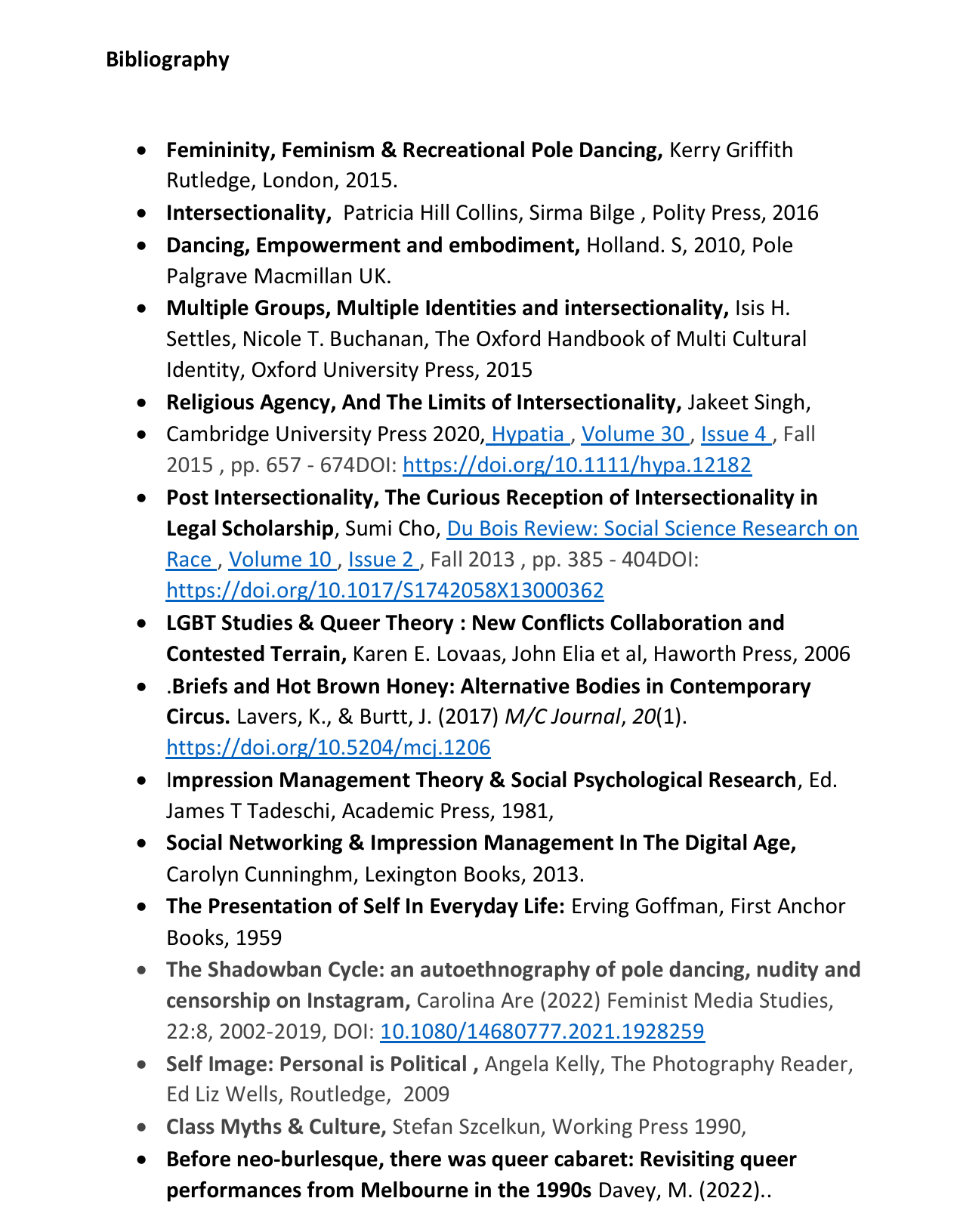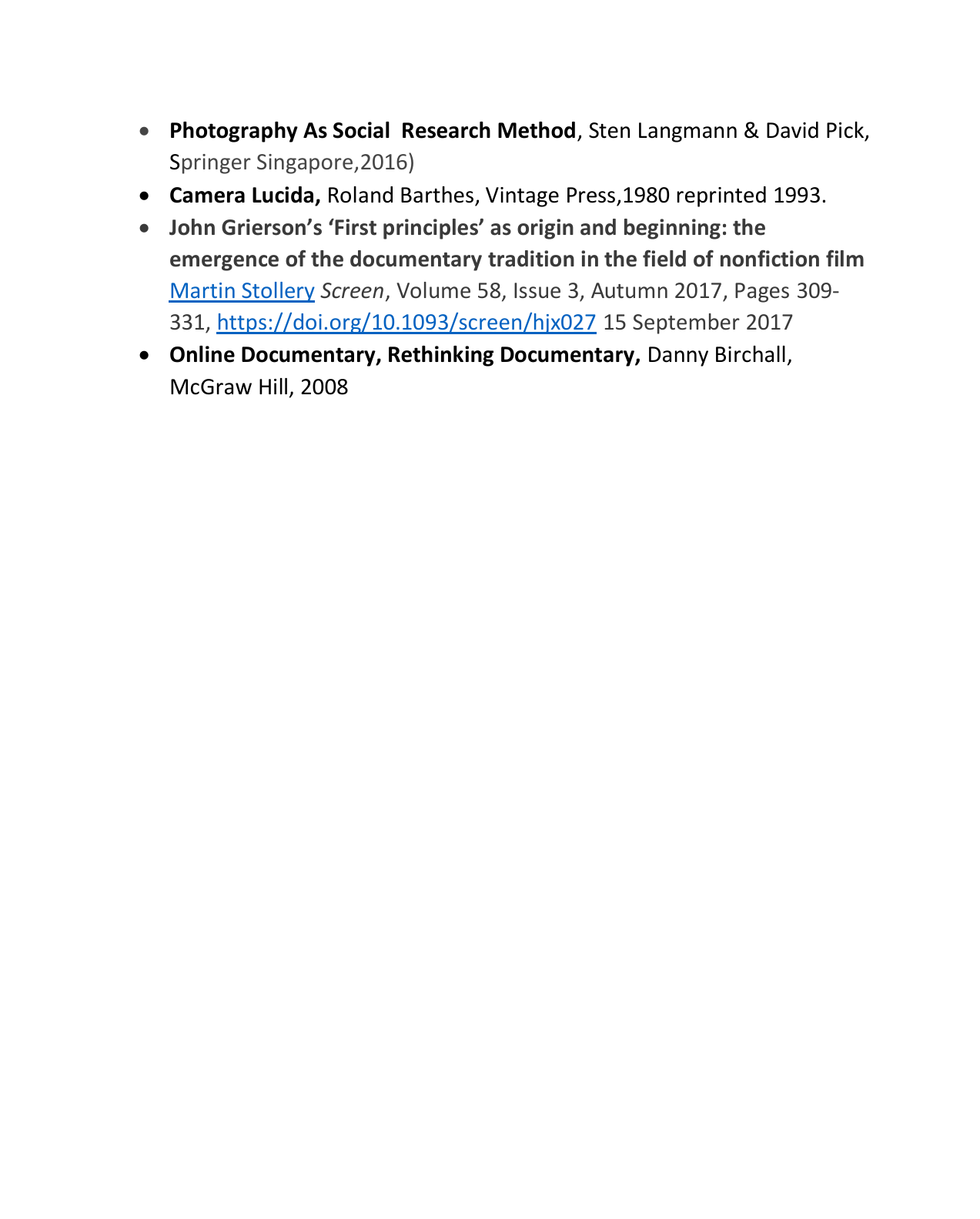Introduction
This section is for those who are interested in the process behind creating the art work for Performing Identities and the deeper meaning attached to them (although meaning is not polysemic). The full project is not presented here. However, I have included the staged portraits that were created using a collaborative method with the participants. The following text in this article is taken directly from the project to give you further insight.
This practice-led research project was focused on Intersectionality in relation to the circus, cabaret and pole dancing community within London. Arguably, with the body being the site of identity formation, expression and display, these were ideal groups to explore. I have always been interested in human movement in function and dysfunction. My interests also extended to identity on the individual and group level and the power structures at play. Utilising intersectionality as a framework would prove beneficial to the project aims.
Intersectionality emerged from critical race studies, it pinpoints where race, gender, class, disability and power structures within society can oppress some individuals and groups, while privileging others. I chose Cabaret, Pole Dancing and Circus performers because, as they are not a homogenous group, and it is possible to explore how these points of intersection play out through lived experience. As an outsider to the community, my intention was to utilise my connections from previous projects to conduct this research project.
Reasons For Choosing This Subject
As a cis-het male that straddles the border of insider/ outsider in the circus, pole and pole dancing community in London, I had been fascinated at how various individuals and groups navigated their identity and their industry. With the emergence of inclusive performing arts initiatives (such as Jacksons Lane Theatre, UpSwing Aerial, Brown Honey, Cocoa Butter Club etc) I wanted to explore how intersectionality impacted performer identity and construction, the performance itself, plus the spaces that were available.
Aims & Objectives
• With the historical division of space, and separation of performers from the “normate” within the circus (Lavers, Patrick et al, 2020. p30) the impact was also reflected in other performing arts such as Cabaret, and still has repercussions. This historical fragmentation is also exhibited in contemporary forms of Pole Dancing, and to explore its dynamics.
• That tensions along the edges of this fragmentation would be apparent to performers / participants, and that they would be self aware enough to recognise.
• That indeed, intersectionality was relevant to the participants themselves and had any impact at all. Project Learning Objectives
• To give agency to participants in their representation.
• Provide an opportunity for participants to explore issues important to them
• Exploration for further areas of research within Circus, Cabaret and Pole Dancing.
• Public engagement
Initial Research Question
If,
“The concept of intersectionality describes the ways in which the systems of inequality based on gender, race, ethnicity, sexual orientation, gender, identity, disability, class and other forms of discrimination “intersect” to create unique dynamic effects.”
(Centre For Intersectional Justice, https://www.intersectionaljustice.org/what is-intersectionality. Accessed 4th August 2023).
Then in what way does intersectionality impact performers, their identity and the spaces available within Circus, Cabaret and Pole Dancing, within London, UK, specifically?
Research Approach
I opted to use a multi-methods qualitative approach, using an interpretivist induction paradigm. This approach gives an understanding of the meaning people attach to various contexts, emphasises qualitative data, allows a flexible approach which allows a change of emphasis as the project continues, the researcher is part of, rather than separate to the research process, and there is less need to generalise results (Collins, 2015, p43). The full research results will not be shared here, just the practice-based outcomes (the staged portrait photographs).
Many of the initial participants were known to me, through shared social circles or I had photographed them previously, so my established relationship could potentially influence in unknown ways (positively or negatively). As the sample size of the participants was limited, a case study approach was used.
Research Design & Method
The project used a blend of qualitative questionnaires via google docs. This was then used as part of a semi-structured interview (consultation) to further the collaborative process between the participants and myself in creating their staged portraits. I contacted various performers via social media and email, with a link to the qualitative questionnaire. The respondents were then sent an email explaining the project with the a consent form attached. A link to book their consultation at their preferred time was also in the email. All consultations occurred via phone.
Based on the themes that arose in the questionnaire and the consultation, the participant would discuss their concept. As part of the qualitative questionnaire participants were asked to provide visual references for their proposed photoshoot. These images were used for photo elicitation during the consultation process which then acted as a reference point for staged images. Photo elicitation is the process where images are used to invoke comments and discussion in the course of a semi-structured interview (Flick, 20007).
The benefit of using photo elicitation in this instance was that it enabled the participant to discuss freely themes and issues important to them without feeling being “put on the spot”. Plus, this opened up other avenues within the discussion. In some instances participants would offer additional visual references just prior to shoot day. As a visual reference, these images helped to convey what the participant wanted to create and how they wanted to “Present” themselves in the staged portraits, rather than how I wanted to “represent them” as “The Operator” (Bathes, 1980). For Bathes the portrait photograph was a “closed filed of forces”.
“Four image-repertoires intersect here, oppose and distort each other. In front of the lens, I am at the same time: the one I think I am, the one the photographer thinks I am, and the one he makes use of to exhibit his art.” (Barthes, 1980, p.13)
Thus, due to this intersection of “field of forces”, the person photographed invariably suffered from a sensation of “inauthenticity”. However, context is key. All these things can be true at the same time, without necessarily leading to a sensation of inauthenticity.
Inauthenticity is not an inherent net result of the “field of forces”. Portraiture can be innovative in that it “emphasises the interpretation of reality from both the researcher's experiences and the subject's portrayal of their experiences” (Langmann & Pick 2016, p18) offering a truly collaborative approach. If identity is a social construction, then in this instance staged portraits allowed for the overt construction of how the performers wished to present themselves based on their experience of intersectionality. The staged portraits could then be read from a contextual standpoint, plus the resultant images could be used in photo elicitation and semi structured interviews for the documentary. One of the advantages of this approach is that the “resulting images can have strong metaphorical value, drawing together experiences, relationships and social issues.” (Langmann & Pick 2016, p47).
Jade : "(Still) Not Your Barbie."
Technical
ISO 160 50mm f/ 6.3 1/200 sec
A 3 light set-up was used. The key light was a 120cm octobox with grid to camera left, forty-five degrees and slightly above the model. A strip softbox was used either side of the dancer.
Camera left was slighting behind the model, illuminating her and the space. The strip soft box on camera right, was slightly behind and directed at the model, to separate her from the background. For the Barbie outfit, a red gel was used on a strobe on camera right, which was placed in the background and flagged to avoid flair.
Mel : "Cobalt Flame"
Technical
ISO 125 50mm f/ 4.0 1/ 100 sec
I used a 3 light set up for this shoot. Camera left was a 120cm octobox with grid on a boom arm, above and pointed downwards/ on the subject. Behind the subject (and the pole) to camera left was a strip softbox with a grid acting as an edge light on the subject, while separating the subject from the background and avoiding any light spill. To the right of the subject was a light with a reflector and barndoors (to avoid any spill). This was shot in a pole studio, and one side of the studio was completely mirrored, so I had to be mindful of any bounce from the light and control as much as I could.
Anouska : "Lilith"
Technical
ISO 100 50mm f/ 5.6 1/200 sec
Shot on a nature reserve, I needed a simple mobile lighting set up. The weather had been unpredictable, and the nature reserve has tall imposing trees and pockets of light scattered about.
I used a speed light with a shoot through umbrella as the key light, and another speed light, with no stand or cover, which was placed in the trees or in the surrounding location as a rim light or fill.
Angie : "Glow"
Technical
ISO 200 46mm f/ 5.0 1/100 sec
This shoot was on location in Jacksons Lane Theatre, London. Lighting was a balance between natural light streaming from the window, and strobes. The two light set up was a 130cm white umbrella to camera left, above and tilted down towards the subject. To camera right a strip soft box was used to fill in the body.
Reflections
This initial sample group included circus performers, cabaret performers and pole dancers. As the research project progressed, there was high drop-out rate as it was over the summer (which is peak time of the year for shows and commercial work) so many had to leave the country for work, or were simply no longer available. While I was aware that many of the participants were working performers, I had not anticipated the impact this would have on the project. In the end, the sample group consisted mainly of Pole Dancers, some of which are represented above.
This skewed the data to the experience of the Pole dancers, and I would have liked to have gotten a deeper dive on the other performance disciplines, and the performer's perspective. Knowing this, in the future, I would ensure to engage that specific sample group outside peak time of the year for performances/ shows.
Overall, the participants were receptive to the collaborative approach, and due to the application of the methodology, allowed me to get rich results, in terms of interviews and images with impact. Aside from the issue with the sample group, the research project aims were achieved. It provided a strong grounding for further exploration.
Bibliography


